Brian Brenner, P.E., F.ASCE, is a professor of the practice at Tufts University and a principal engineer with Tighe & Bond in Westwood, Massachusetts. His collections of essays, Don’t Throw This Away!, Bridginess, and Too Much Information, published by ASCE Press, are available in the ASCE Library.
In his Civil Engineering Source series, More Water Under the Bridge, Brenner shares some thoughts each month about life as a civil engineer, considering bridge engineering from a unique, often comical point of view.
This summer, Mitchell and Carol Rose went on a road trip cross-country vacation. The best part of the trip (in my opinion) was all the bridges they got to see. Mitchell emailed me a “bridge of the day” photo with a challenge to see if I could identify it. I am mostly modest except when it comes to bridges, where I have casually let my friends know that I know about every bridge in the world. Mitchell wanted to see if this was true.
Here is a travelogue from Mitchell and Carol’s trip. The westbound route started in the south, and moved up the west coast and then north and east back to Boston. In addition to seeing bridges, the Roses did other tourist things and visited family. That is interesting, but let’s focus on the bridges.
Photos are by Mitchell Rose unless identified otherwise. We start our cross-country bridge tour in Little Rock, Arkansas.
Bridge #1 – Broadway Bridge, Little Rock, Arkansas
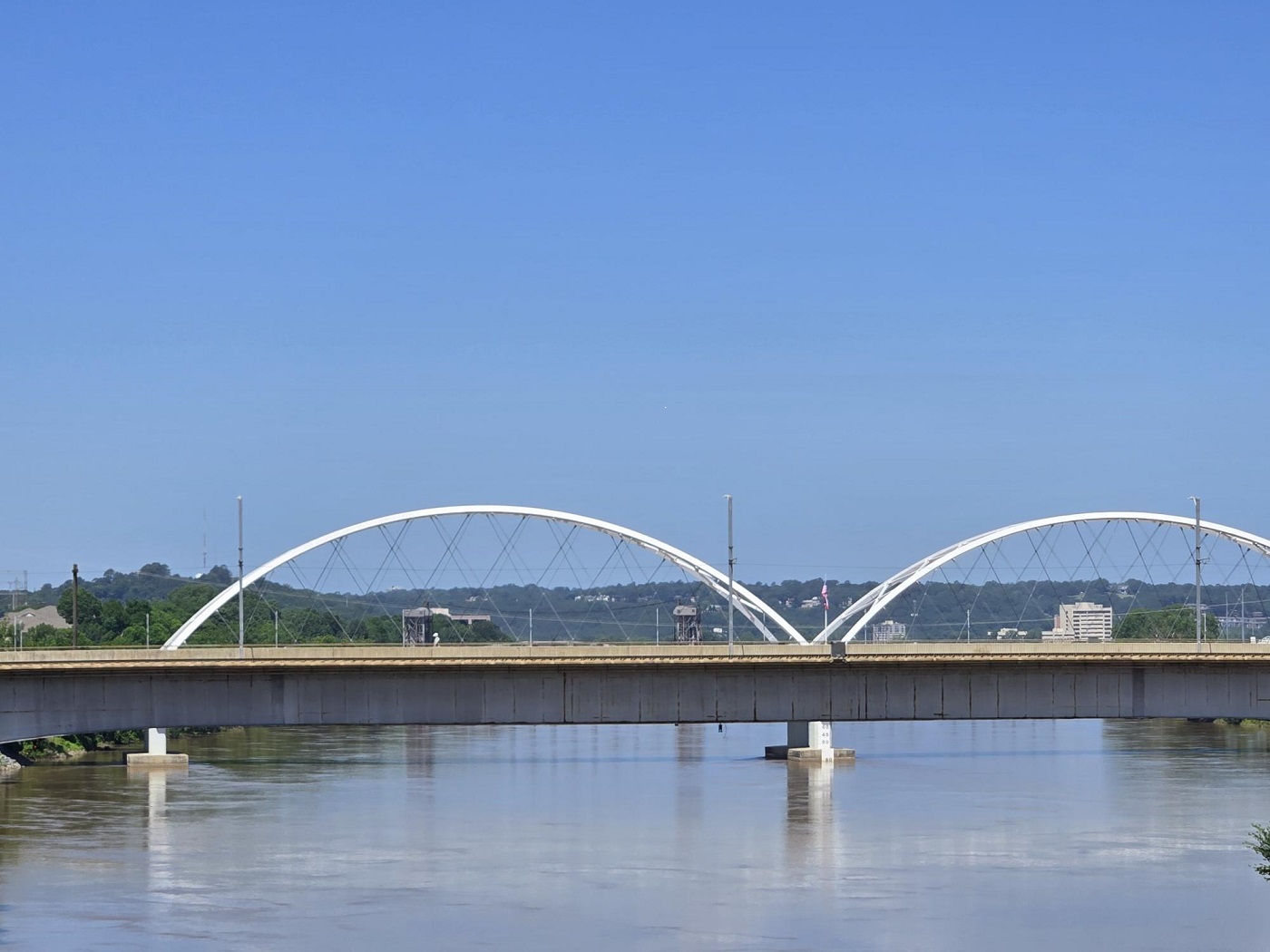 Mitchell Rose
Mitchell Rose Mitchell took a photo of the new Broadway Bridge with another bridge in the foreground. This is probably the most notable bridge in Little Rock. The new bridge is a double-tied arch span crossing the Arkansas River. It replaced the old Broadway bridge, which was demolished in 2016.
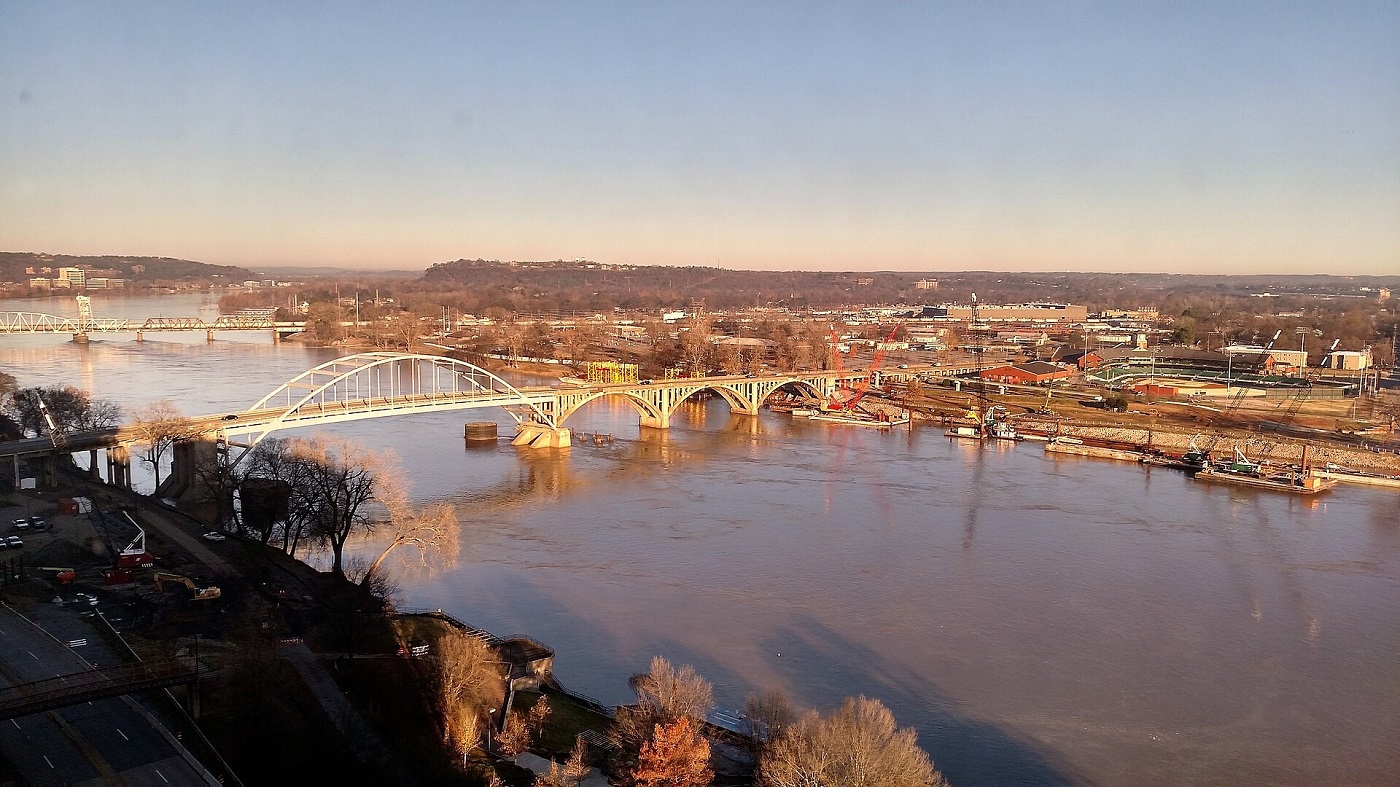 Wikipedia
Wikipedia The picture below shows the new bridge more clearly. It is a beautifully detailed crossing that reflects on the old bridge but with modern updates. The bridge was a National Steel Bridge Alliance prize winner in 2020.
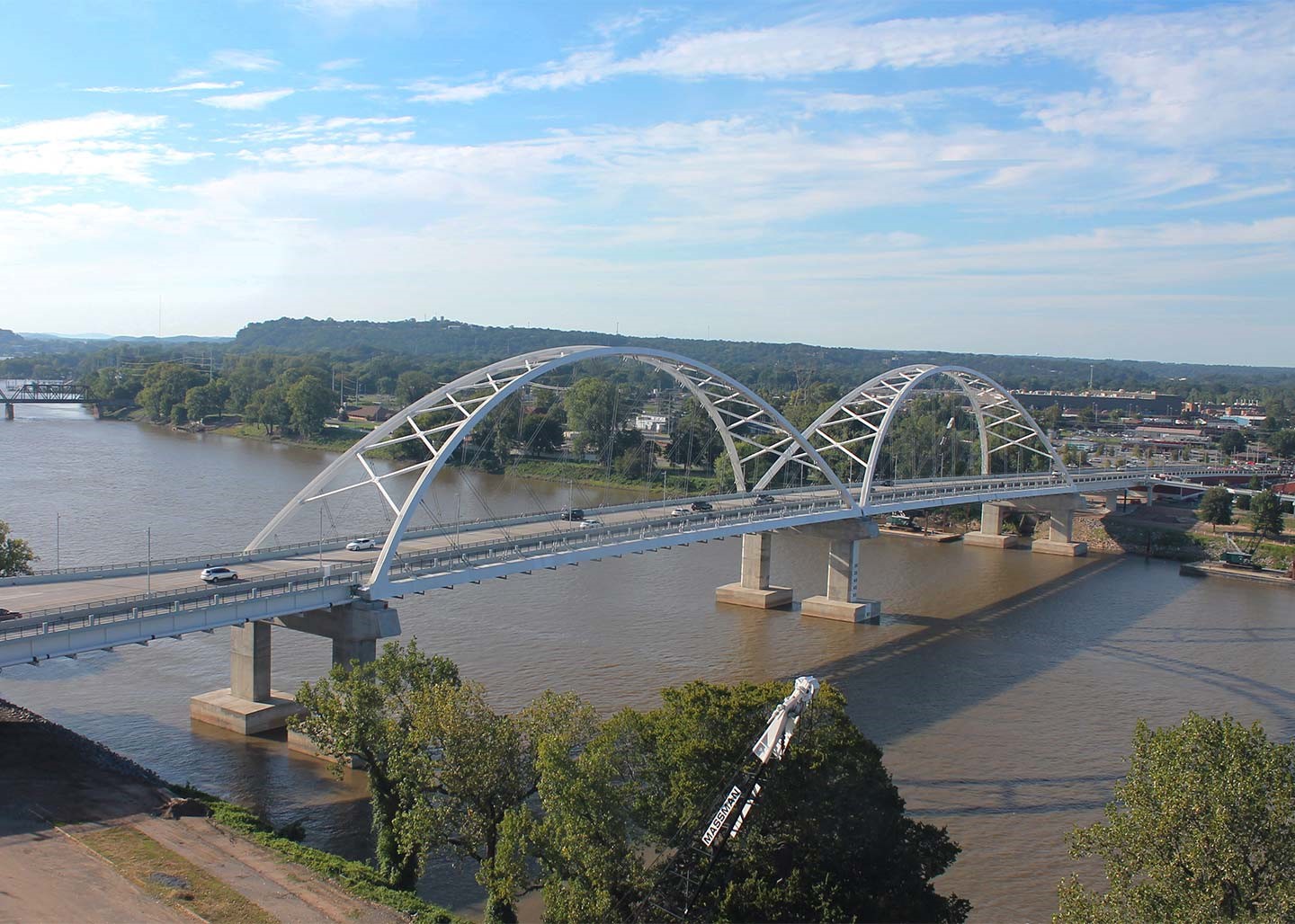 Arkansas DOT
Arkansas DOT Bridge #2 – Rio Grande Gorge Bridge, Taos, New Mexico
Further west, Mitchell encountered a surprising and stunning bridge in New Mexico, which seems to randomly appear on the high plateau. The bridge leaps across the Rio Grande on a 1960s vintage deck arch truss. Mitchell thought he stumped me on this one. But although I haven’t visited it, the span is on my bridge bucket list, and I have Googled the site many times.
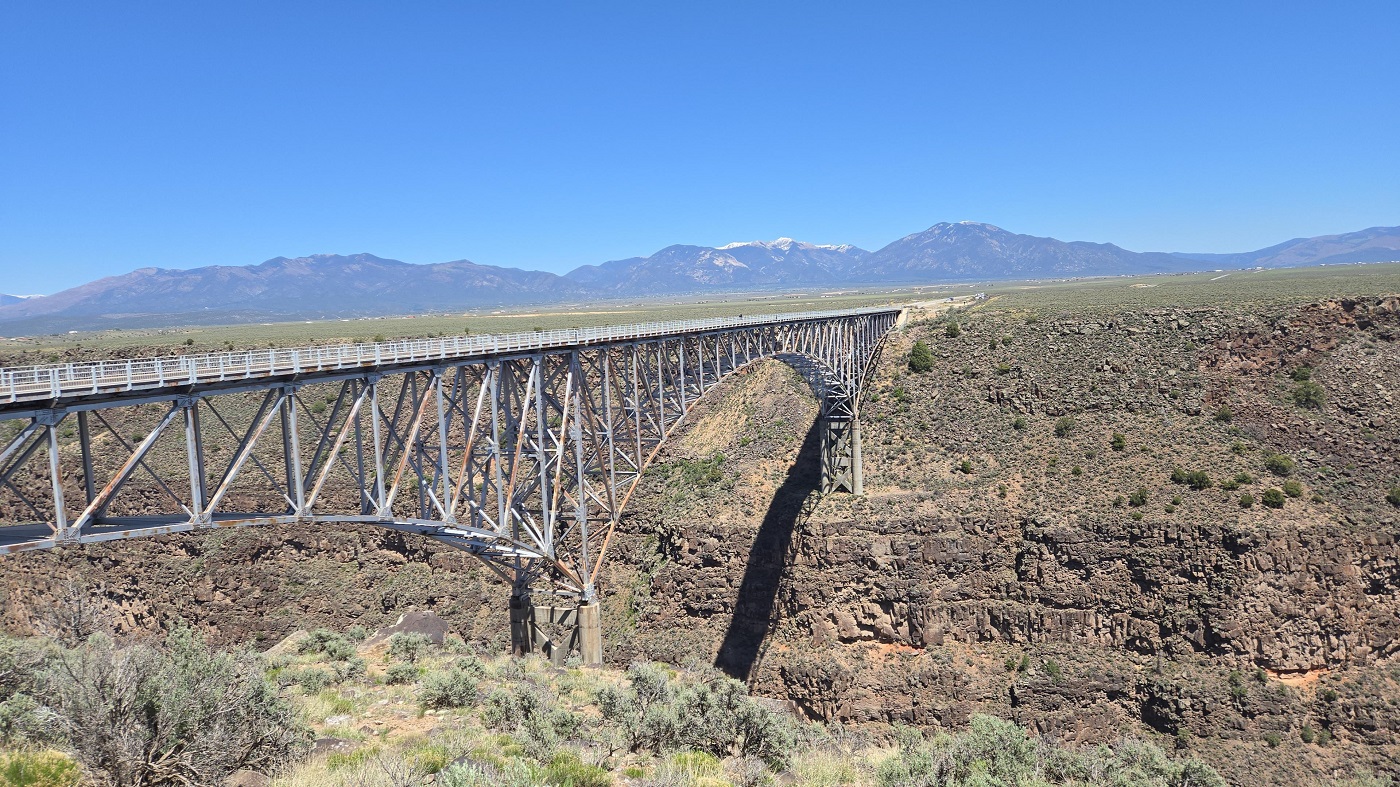 Mitchell Rose
Mitchell Rose The truss is nicely shaped, more like a flat arch than a truss bridge. The stunning location and scenery add to the drama of the crossing. The bridge received an AISC award for “Most Beautiful Steel Bridge” in 1966.
The photo below provides another view of the scale of the canyon and how well the bridge fits at this site.
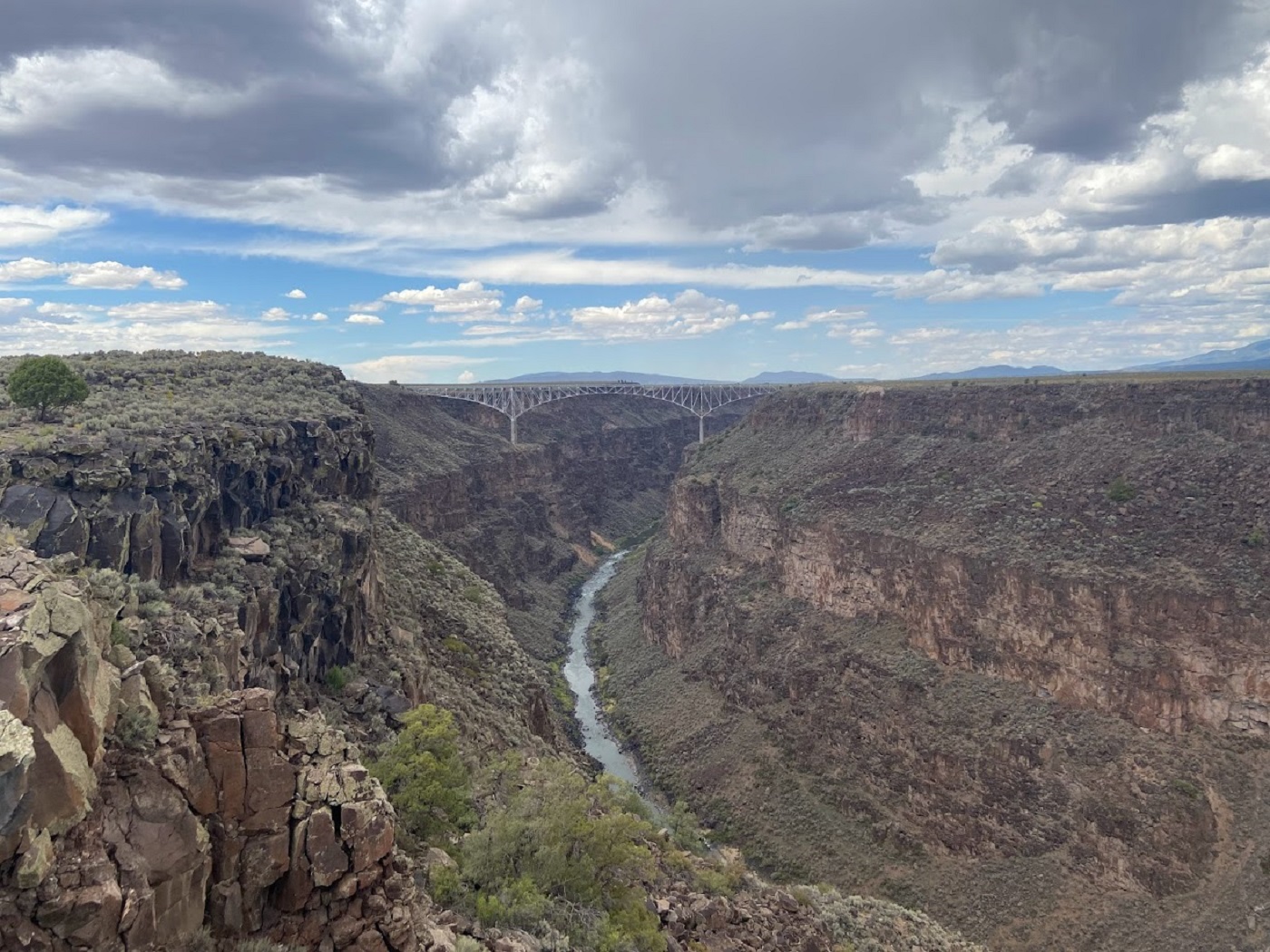 Tobyw87
Tobyw87 Bridge #3 – The Mystery Arch Bridge
Mitchell’s trip took an unexpected detour to the north. The Roses originally planned to stop in Death Valley, which is hot in June. Unfortunately, the valley lost power the day they planned to visit, so it was hot with no air conditioning. Their new route veered north, but further inland than originally planned.
Mitchell’s photo of Bridge #3 almost stumped me, not so much because it is an unusual bridge, but because of the angle he took the photo from.
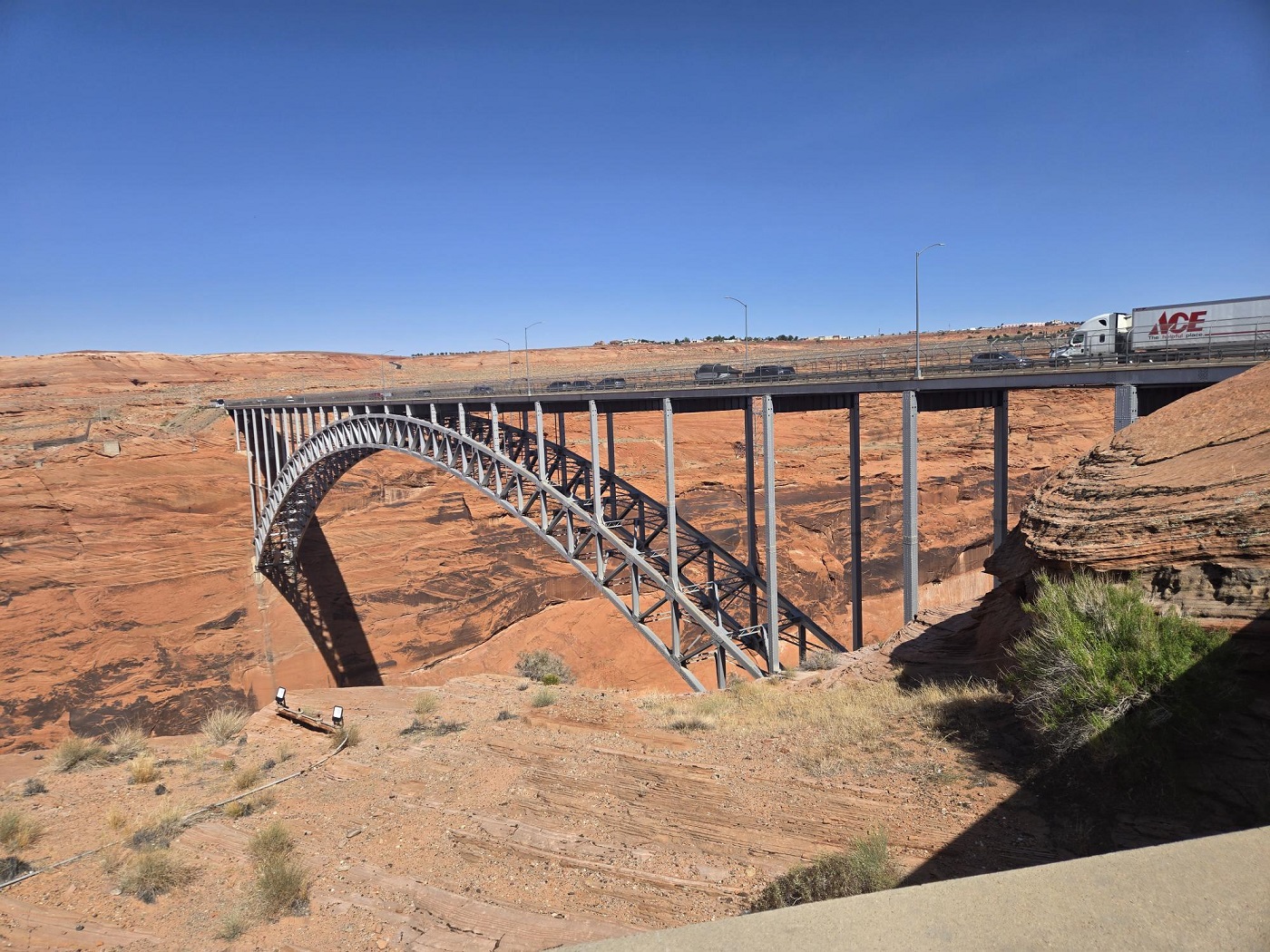 Mitchell Rose
Mitchell Rose A few things give it away. There are only so many bridges in the west (and on Mitchell’s revised route) where a large deck arch crosses a canyon. Looking at the picture, you can see the edge of a town in the background, and that nailed it for me! The only large bridge like that is the Glen Canyon Bridge, and the distant town is Page, Arizona. But what was confusing was that the Glen Canyon Bridge is directly in front of the huge Glen Canyon Dam. Mitchell’s photo was taken on the edge of the dam, and cropped to make it look like the bridge spanned alone, by itself. This is not a common view of the bridge.
Fortunately, I had visited the site a few times and had gone rafting on the Colorado river below the dam, so I was not fooled by the clever photo.
So far on Mitchell and Carol’s trip, I was 3 for 3!
Bridge #4 – Yaquina Bay Bridge, Newport, Oregon
Mitchell emailed that the next bridge on his trip was a gimme, and he even identified it as “#5,” a reference to my blog post about the top five bridges.
The photo is clearly of the beautiful Yaquina Bay Bridge in Newport, Oregon. Mitchell’s photographic contribution to the bridge literature is the placement of sea lions lounging on the dock in the foreground. The bay has a lot of seals and sea lions, so it is not an uncommon view.
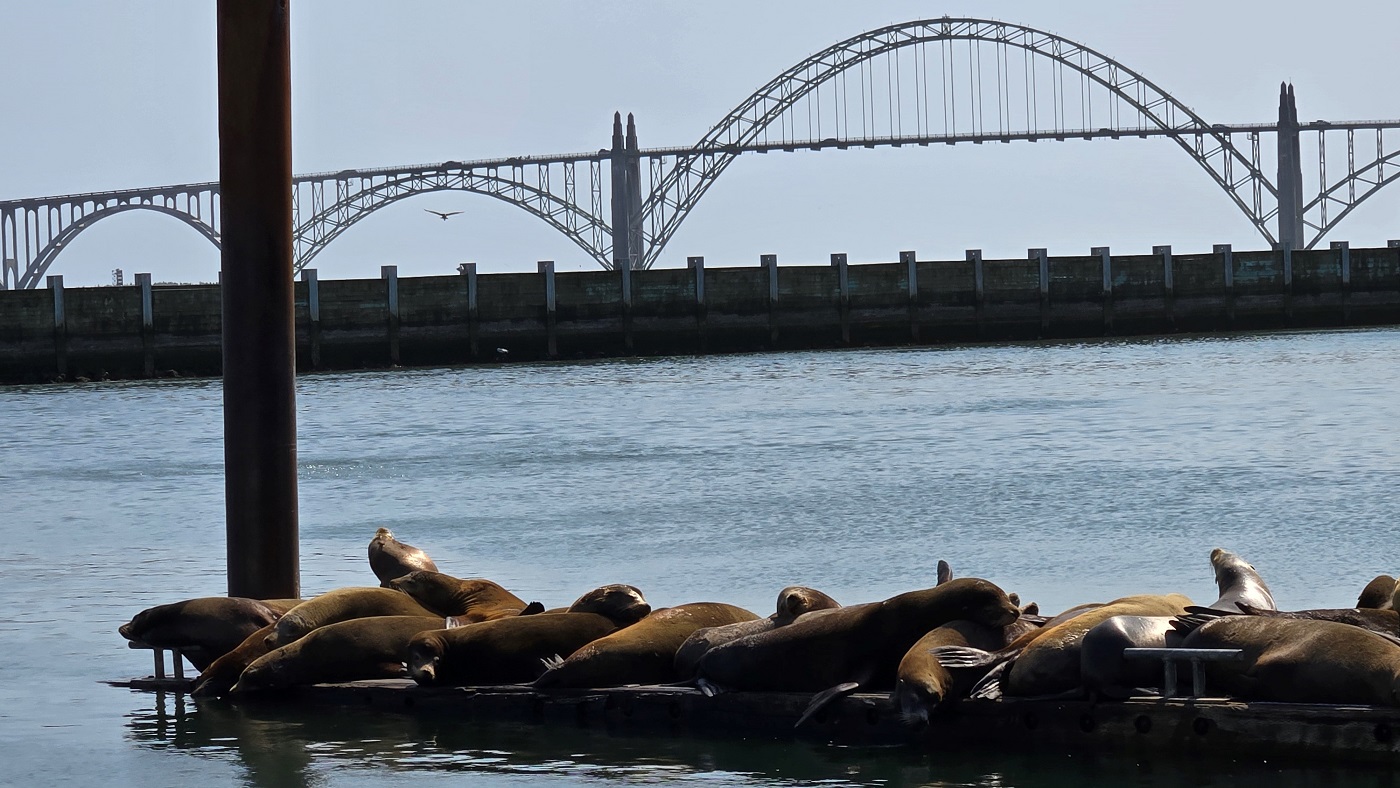 Mitchell Rose
Mitchell Rose Bridge #5 – Toketee Trail Bridge
OK, so maybe I don’t know every bridge. The little pedestrian bridge shown below is on the Toketee Falls Trail and at first I had no idea where it was. You can’t even Google this one, since there are larger bridges on the trail that come up instead. The photo below shows a crossing of a stream near the trailhead. The trail winds its way through a temperate rainforest to Toketee Falls. Nearby is a large hollowed out Redwood pipeline which diverts water from the falls to help power electric turbines. The facility was constructed as part of the North Umpqua Hydroelectric Project in 1949.
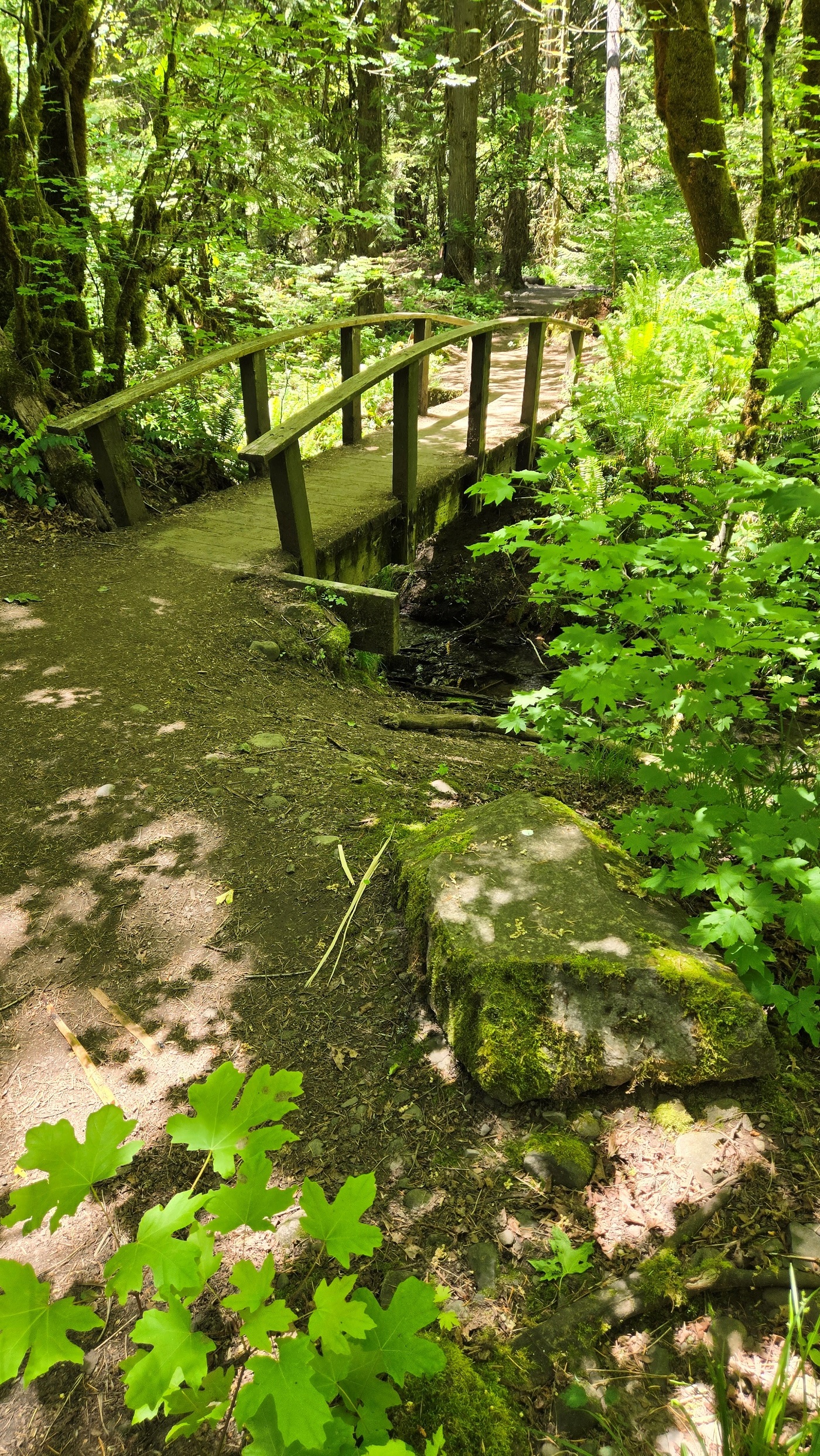 Mitchell Rose
Mitchell Rose
Bridge #6 – Monroe Street Bridge, Spokane, Washington
After visiting Seattle, the Roses made their way to Spokane, Washington, where they rode the downtown cable car. Possibly the best feature of the ride is its dramatic passage underneath a large, old concrete arch bridge. Mitchell sent this picture:
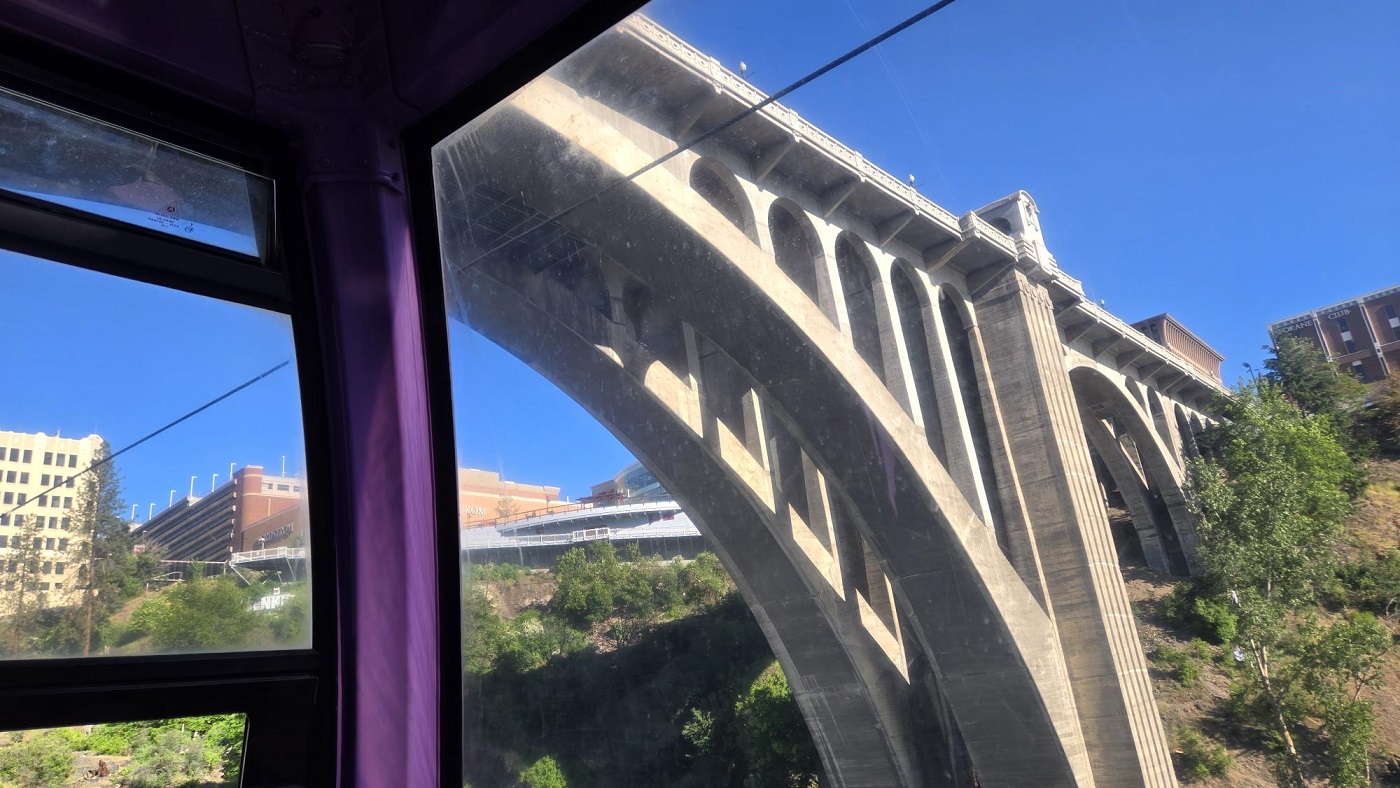 Mitchell Rose
Mitchell Rose I remembered seeing the bridge, but I didn’t remember the name. So, I get partial credit on this one? With a little research, I found that the photo shows the Monroe Street Bridge. It is a beautiful, well-preserved and historic open spandrel wall deck arch bridge, originally built in 1911. When it opened, it was the biggest of its type in the world at the time. Much of the structure was rebuilt in 2005.
The skyride looked like fun.
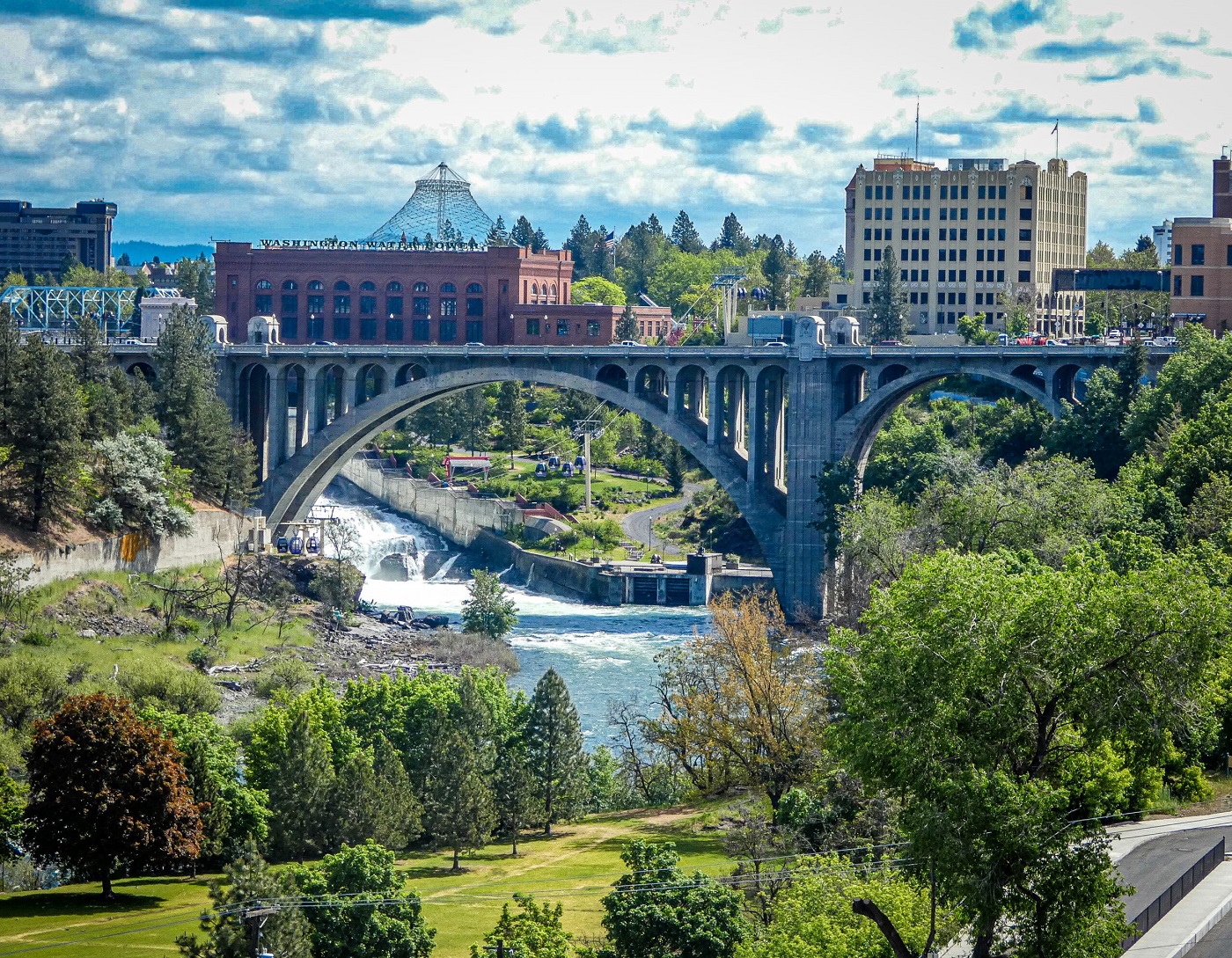 historicspokane.org
historicspokane.org Bridge #7 – Kootenai Falls Swinging Bridge, Troy, Montana
Travelling east, Mitchell encountered this slender pedestrian bridge. It spans the Kootenai River gorge just below the falls. This video gives you a feel for the crossing experience, which includes a lot of bouncing and swinging. One man crossing the bridge narrates: “I do not like this. I do not like this at all.”
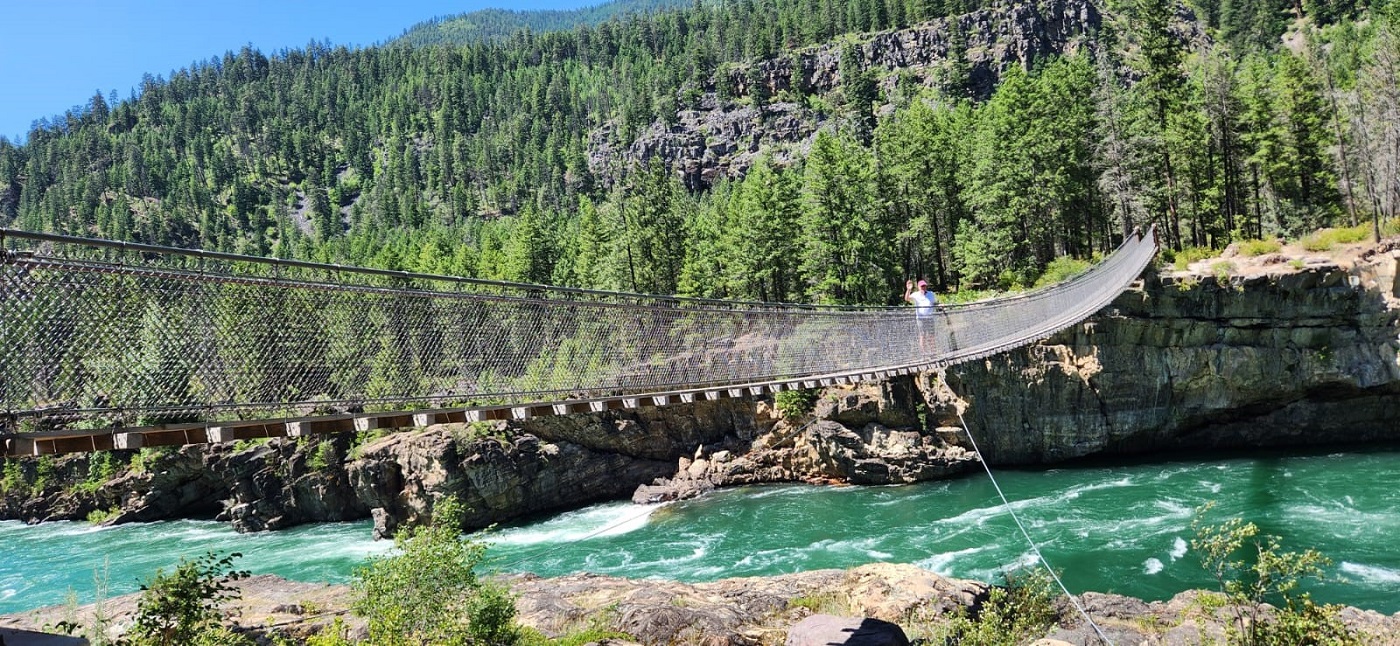 Carol Rose
Carol Rose Bridge #8 – Keystone, Wye, near Rapid City, South Dakota
When visiting Mt. Rushmore, the Roses encountered this unique set of bridges at the junction of US Routes 16 and 16A. The large glue-laminated deck arch crosses over a timber framed beam bridge, which crosses Route 16 at grade level. You can see how a hinge is detailed at the crown of the arch. The timber pieces have steel gusset plate caps.
The highway layout provides a non-signalized interchange for access to Mount Rushmore in an otherwise sparsely populated rural area.
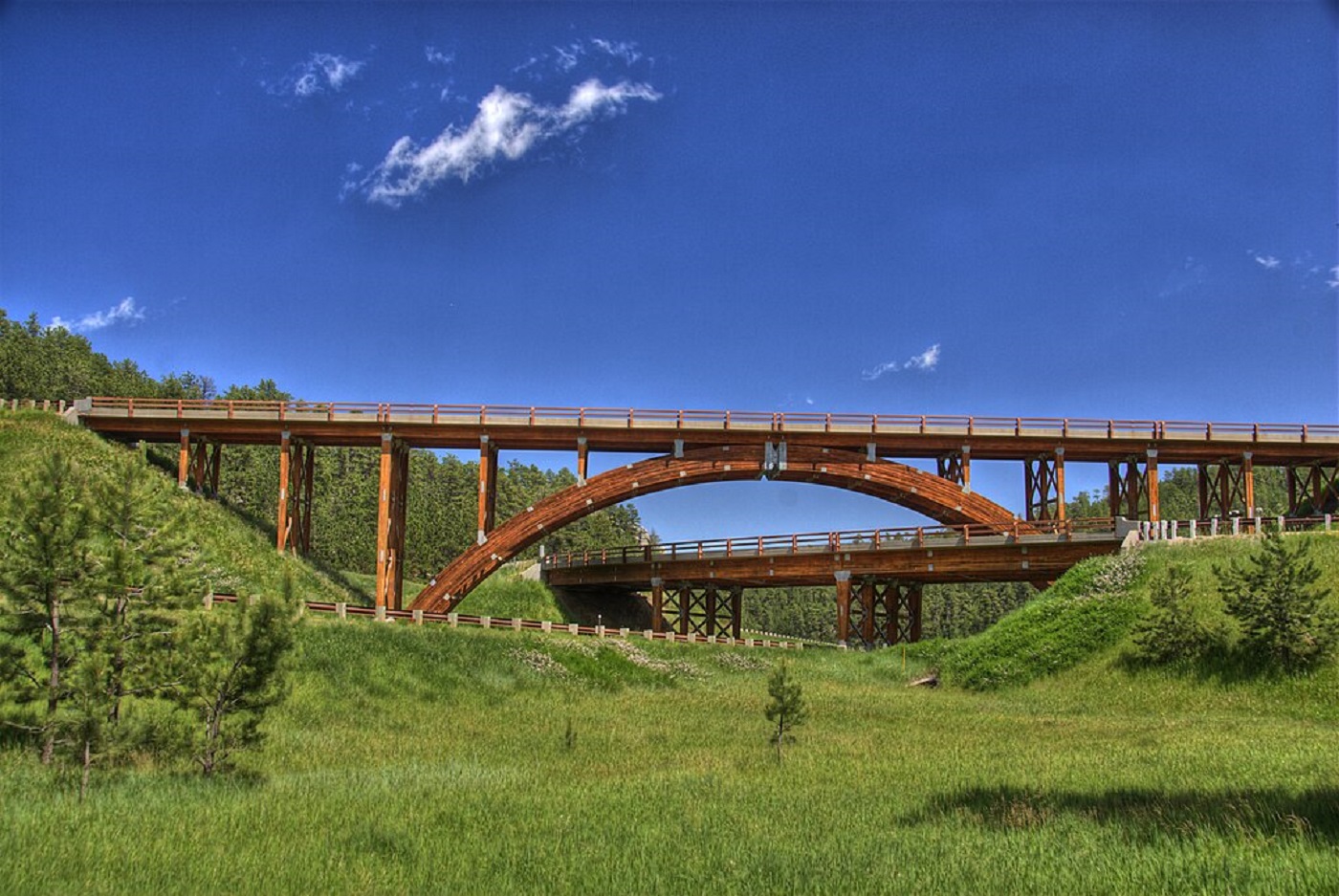 Thaddeus Roan
Thaddeus Roan
Bridge #9 – Rainbow Bridge, Niagara Falls, New York/Ontario
Getting close to home, the last bridge on the tour was the Rainbow Bridge, crossing the Niagara River just below the falls. In addition to large waterfalls, the site has an interesting bridge history. Prior to construction of arch bridges, the river was crossed by a suspension bridge from 1855 to 1897. John Roebling was the chief engineer. He later designed the Brooklyn Bridge.
The suspension bridge had two decks. One deck carried rail traffic. As locomotive weights increased, the suspension bridge was judged to be inadequate, and it was replaced by the Honeymoon Bridge. This deck truss arch bridge collapsed in 1937 when the footings were displaced by an ice jam on the river, and it was in turn replaced by the current arch bridge.
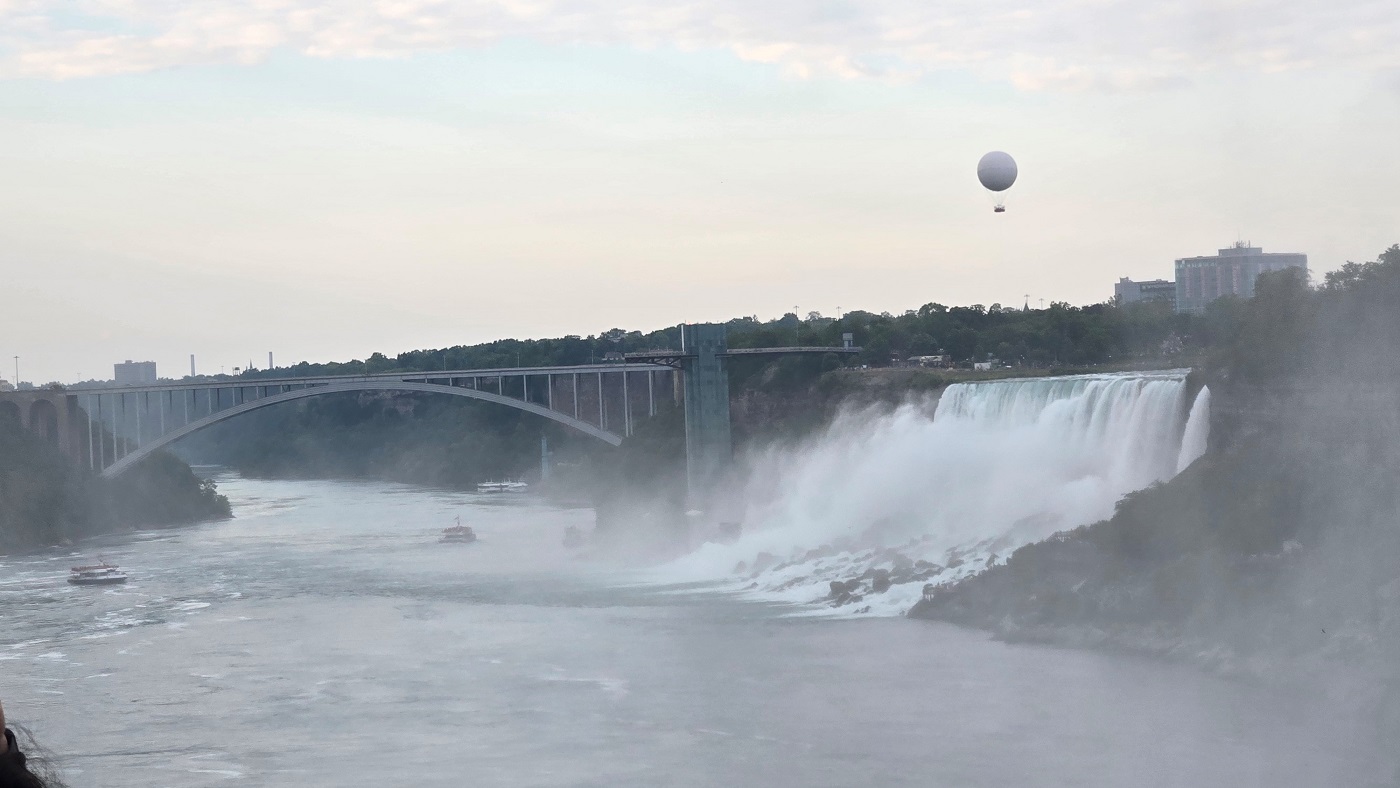 Mitchell Rose
Mitchell Rose Because our vacation was almost over, I wanted to show off one more time to Mitchell. I emailed:
“Mitchell, did you know that of the Earth’s three mega-waterfalls, two have arch bridges spanning just below the falls? In addition to the Rainbow Bridge at Niagara Falls, Victoria Falls in Zambia and Zimbabwe has the Victoria Falls Bridge. The third waterfall, Iguazu Falls between Brazil and Argentina, unfortunately does not have an arch bridge below, although it is a nice waterfall.”
Mitchell responded:
“That is interesting. Here is a picture of the Victoria Falls Bridge that I took in 2018. Daughter, Emily (who lives in Argentina) visited Iguazu Falls last week, and you are right. There was no arch bridge.”
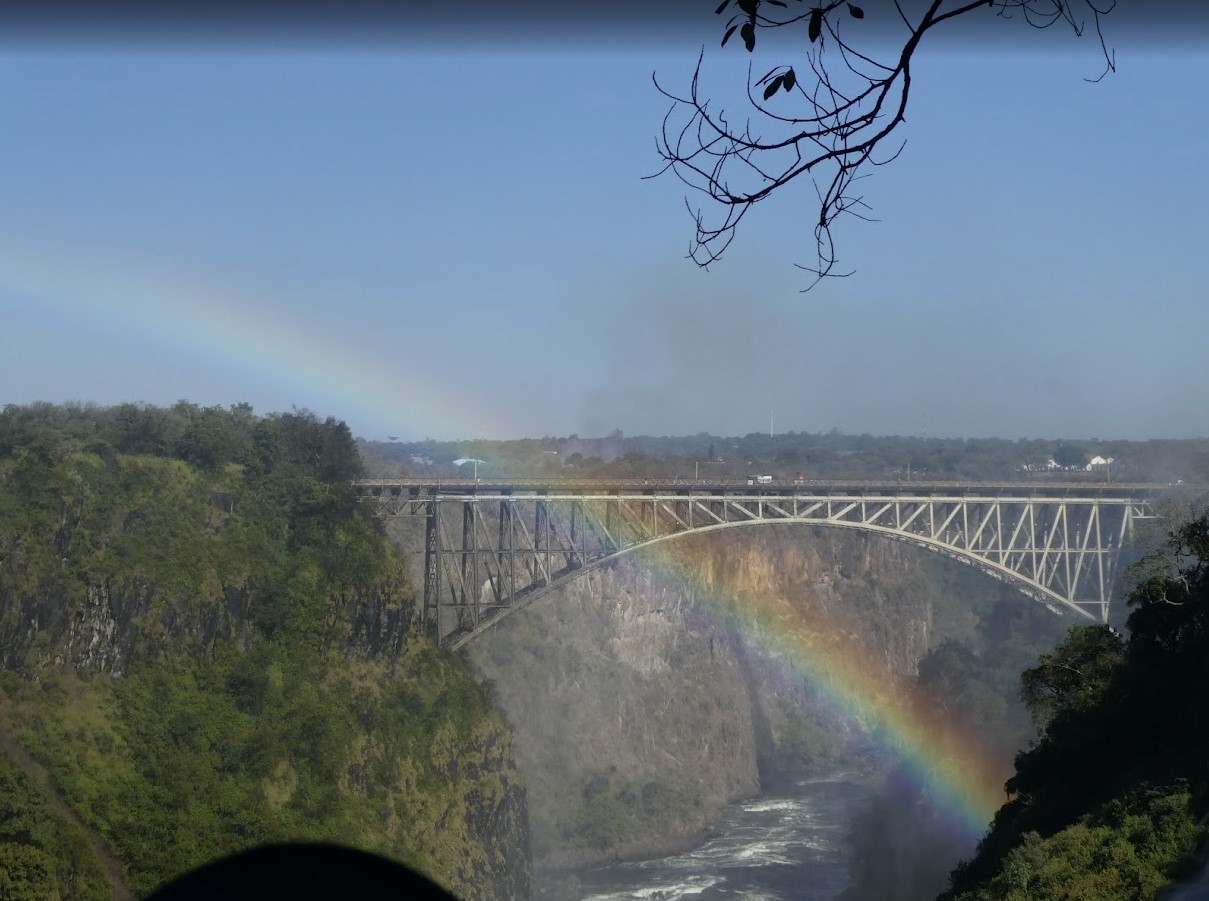 Mitchell Rose
Mitchell Rose After many weeks on the road with many excellent bridges, the Roses made it back home to Massachusetts. Now it is time to start planning next year’s road trip with bridges.



